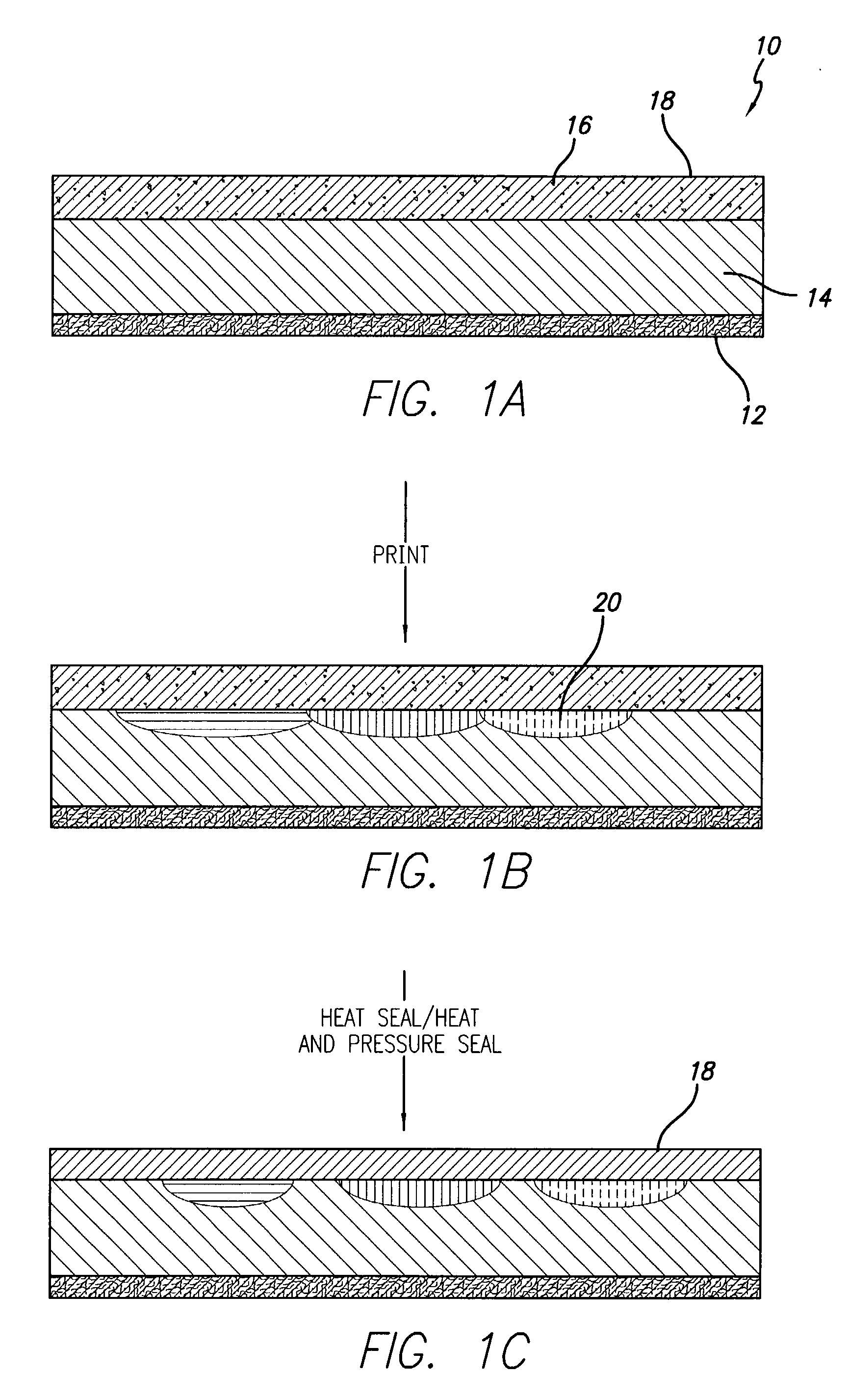Sealable topcoat for porous media
a technology of porous media and topcoat, applied in the direction of printing, duplication/marking methods, coatings, etc., can solve the problems of physical alteration of media, change or degrade image quality, and low development rate of latex for and achieve the effect of improving image permanence and quality
- Summary
- Abstract
- Description
- Claims
- Application Information
AI Technical Summary
Benefits of technology
Problems solved by technology
Method used
Image
Examples
example 1
Preparation of Sealable Topcoat
[0034] An ink-jet recording media was prepared on either a film-based substrate (Mylar) or a resin-coated paper substrate (photobase paper). An ink-receptive coating was prepared using a conventional microporous basecoat primarily consisting of large surface area inorganic pigment (alumina-pseudo-boehmite), and binder (polyvinyl alcohol).
[0035] A topcoat consisting of 0.5 to 2 grams per square meter coating of acrylic latex (anionic styrene / acrylic) having a T.sub.g of 70.degree. to 80.degree. C. and a particle size of 60 to 250 nanometers in polyvinyl alcohol (PVA) was prepared, in which the concentration of the acrylic latex was 85 to 95 parts by weight and the balance (15 to 5 parts by weight) was PVA. The topcoat was coated on the ink-receptive coating. The topcoat was dried in an oven at 40.degree. C. An image was printed on the topcoat of the ink-jet recording media using a Hewlett-Packard DeskJet 970C printer. A heat gun located approximately 6 ...
PUM
| Property | Measurement | Unit |
|---|---|---|
| Temperature | aaaaa | aaaaa |
| Time | aaaaa | aaaaa |
| Angle | aaaaa | aaaaa |
Abstract
Description
Claims
Application Information
 Login to View More
Login to View More - R&D
- Intellectual Property
- Life Sciences
- Materials
- Tech Scout
- Unparalleled Data Quality
- Higher Quality Content
- 60% Fewer Hallucinations
Browse by: Latest US Patents, China's latest patents, Technical Efficacy Thesaurus, Application Domain, Technology Topic, Popular Technical Reports.
© 2025 PatSnap. All rights reserved.Legal|Privacy policy|Modern Slavery Act Transparency Statement|Sitemap|About US| Contact US: help@patsnap.com


